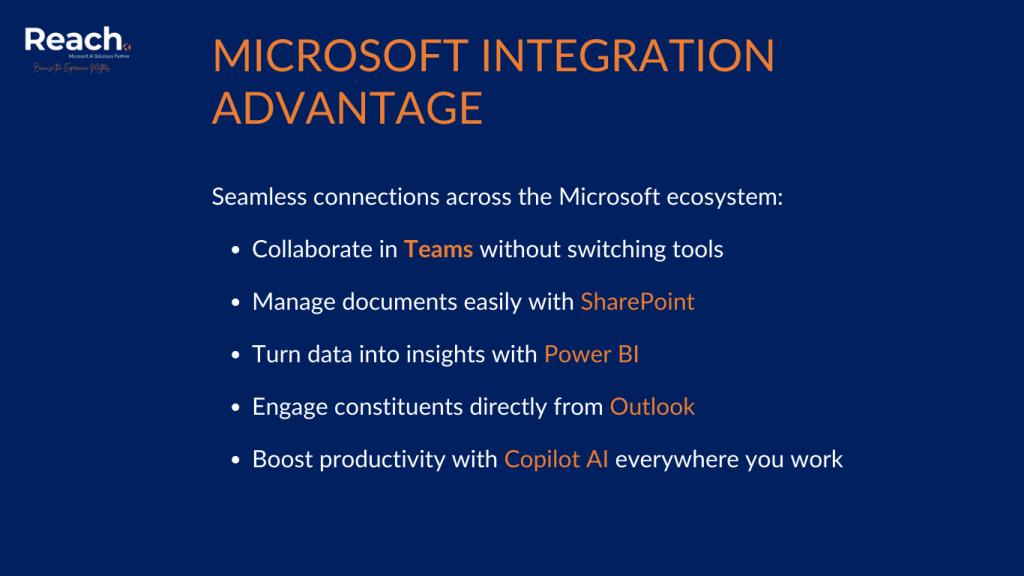When your mission-critical systems become mission-impossible obstacles
Let’s be honest: nobody at your nonprofit signed up to spend their days wrestling with broken workflows, disconnected systems, and Excel sheets that have evolved into Frankenstein’s monsters. You came here to change lives, support communities, and advance causes that matter. Yet here you are, spending precious hours trying to figure out why your donor database won’t talk to your finance system, or why generating a simple grant report feels like solving a Rubik’s cube blindfolded.
At Reach, we’ve sat across the table from countless nonprofit leaders who’ve shared this same exhausted look. The one that says, “We implemented an non profit ERP three years ago, and somehow things got worse, not better.”
You’re not alone, and more importantly, you’re not stuck.
The Real Cost of a Failed ERP
When your ERP system isn’t working, it’s not just an IT problem—it’s a mission problem. Every hour your team spends on manual workarounds is an hour not spent serving your community. Every delayed report risks donor confidence. Every data discrepancy threatens compliance.
We recently worked with a nonprofit whose outdated systems forced them to rely on phone calls and emails for even routine transactions. Staff spent excessive time on manual data entry, introducing errors and slowing operations to a crawl. Meanwhile, their D365 Finance & Supply Chain Management system—which housed powerful business logic for pricing, inventory, and order management—remained inaccessible to the people who needed it most.
The transformation? Within months, they eliminated manual processes, reduced support workload, and empowered their stakeholders with real-time access to critical information. But we’re getting ahead of ourselves.

Why Traditional ERP Implementations Fail Nonprofits
Here’s what typically goes wrong: vendors approach nonprofit implementations the same way they approach commercial ones. They don’t understand that your “customers” are actually beneficiaries, donors, volunteers, and grantors—each with entirely different needs. They don’t grasp that your financial reporting isn’t just about the bottom line; it’s about fund accounting, restricted grants, and program efficiency ratios.
Most importantly, they underestimate the complexity hidden beneath your seemingly straightforward mission statement. They fail to recognize that nonprofits often operate with:
- Multiple funding streams with different restrictions
- Complex compliance requirements across various grant programs
- Diverse stakeholder groups requiring different types of engagement
- Limited IT resources but enterprise-level operational complexity
- The need to demonstrate impact, not just track transactions
The Microsoft Advantage: Built for Your Reality
This is where Microsoft’s nonprofit-specific solutions—and Reach International’s implementation expertise—make all the difference. Microsoft Dynamics 365 isn’t just adapted for nonprofits; it’s designed with your unique needs in mind.
Dynamics 365 Business Central handles the complex fund accounting and grant management requirements that keep your auditors happy and your board informed. No more Excel gymnastics to track restricted funds or allocate overhead across programs.
Dynamics 365 Finance & Supply Chain Management provides enterprise-grade capabilities for larger nonprofits managing complex operations, inventory, and multi-site coordination—all while maintaining the transparency donors expect.
Power Platform serves as the connective tissue, letting you build custom apps and automate workflows without writing code. Need a volunteer check-in app for your annual gala? Want to automate grant application workflows? Create a self-service portal for beneficiaries? Power Pages and Power Automate make it possible—and practical.
Microsoft 365 Integration means your ERP doesn’t exist in isolation. Teams collaboration, SharePoint document management, and Outlook communications all flow seamlessly with your operational systems.
Our Human-Centered Rescue Approach
At Reach, we don’t believe in rip-and-replace chaos or endless customization debates. Our approach is grounded in a simple philosophy: technology should work for people—not the other way around.
Here’s how we approach ERP rescue differently:
Start with People, Not Processes We begin by understanding who uses your systems and what they’re trying to accomplish. Customer interviews, stakeholder workshops, and real-world observation inform every decision. We design for the user, not the system.
Leverage What Works That D365 system gathering dust? It probably has more capability than you realize. We often find that organizations are using just 20% of their system’s potential. Before adding complexity, we unlock what you already have.
Build Bridges, Not Walls Using tools like Dual Write and native Microsoft integrations, we create seamless connections between systems. Your staff shouldn’t need to know where data lives—it should just be there when they need it.
Iterate and Evolve We treat your digital transformation as an evolving platform, not a fixed project. Quick wins build momentum, user feedback drives improvements, and continuous refinement ensures long-term success.
Real Impact: From Crisis to Capability
The nonprofit we mentioned earlier? Their transformation went beyond operational efficiency. By implementing a fully integrated customer portal using Power Pages and Dual Write, they created a digital experience that:
- Gave stakeholders 24/7 self-service access to critical information
- Eliminated manual data entry for routine transactions
- Reduced errors through real-time ERP validation
- Freed staff to focus on mission-critical activities
- Created a scalable foundation for future digital initiatives
But perhaps most importantly, it restored their team’s confidence in technology as an enabler, not an obstacle.

The Integration Advantage
One of the most powerful aspects of the Microsoft ecosystem is how naturally everything connects. Your Dynamics 365 system seamlessly integrates with:
- Microsoft Teams for collaboration without context-switching
- SharePoint for document management that actually makes sense
- Power BI for board reports that tell your impact story visually
- Outlook for constituent engagement that flows naturally from email to CRM
And with Copilot capabilities now embedded throughout the Microsoft stack, your team gets AI assistance right where they work—whether that’s drafting donor communications, analyzing program data, or forecasting resource needs.
Critical Success Factors We’ve Learned
Through years of nonprofit transformations, we’ve identified key factors that separate successful rescues from repeated failures:
Executive Sponsorship: Leadership must champion the change and ensure adequate resources and cross-departmental cooperation.
User Involvement: The people who will use the system daily must be involved in design and testing phases—not as an afterthought, but as co-creators.
Data Quality Focus: When users access ERP data directly, data quality issues surface immediately. Address these proactively, not reactively.
Security Balance: Carefully design access controls that balance accessibility with compliance requirements.
Flexible Architecture: Build for evolution. Requirements will change, programs will shift, and new opportunities will emerge.
Your Path Forward
If you’re reading this while surrounded by sticky notes reminding you of manual processes, or if you just finished yet another “emergency” Excel report for your board, it’s time for a change.
You don’t need to abandon everything and start over. You don’t need to endure another failed implementation. What you need is a partner who understands both nonprofit operations and the Microsoft ecosystem—someone who can rescue your current situation while building toward your future.
At Reach, we’ve made it our mission to ensure technology amplifies your mission, not complicates it. We specialize in translating complex systems into simple, human-centered digital experiences. Our Microsoft AI Solutions Partner status isn’t just a badge—it’s a commitment to bringing enterprise-grade solutions to mission-driven organizations.
We bring:
- Deep experience with Dynamics 365 and Power Platform
- A strong track record with mission-driven and nonprofit organizations
- A commitment to practical innovation—solutions that scale, not sprawl
- Close collaboration and transparency every step of the way
Ready to Reclaim Your Mission?
Your ERP should be the backbone of your operations, not a pain in your back. It should free your team to focus on impact, not imprison them in process.
Let’s have an honest conversation about where you are today and where you need to be. No sales pressure, no technical jargon—just a straightforward discussion about how we can help you regain operational control and redirect your energy toward your mission.
Because at the end of the day, the only spreadsheet that really matters is the one that counts the lives you’ve changed. Everything else should just work.
Reach is specialized in helping nonprofits and mission-driven organizations unlock the full value of their technology investments. Ready to explore your rescue options? Contact us for a consultation about transforming your ERP challenges into mission success.

